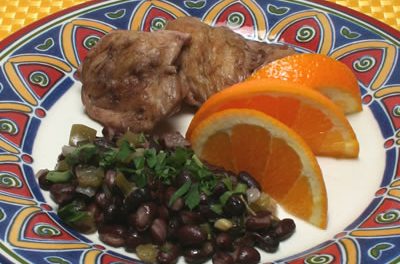Bringing lunch from home is a bargain in a bag � easy on both your weight and your wallet. Making your own midday meal gives you better control over portion size, calorie and fat content, and at the same time provides nutritional benefits that can even lower the risk of cancer and other chronic diseases.
The most popular purchased lunches to eat at the office are sandwiches, wraps and salads. But they can be full of hidden fats and calories and poor nutrition bargains. The only way to get a true bargain is to make your own.
A good place to start with your brown-bag lunch is the traditional, central item: the sandwich. Since about 60 percent of a sandwich is bread, use one made of a whole-grain flour. But just because bread is dark brown, don't think this means it's a whole grain. Caramel color or molasses is often added to bread to give it a deep color.
Whole grains, which are more nutrient-dense than refined versions, are more fiber-rich and filling than refined grains. They are rich in many health-protective substances: antioxidants, phytochemicals, vitamin E, folic acid, zinc, selenium and magnesium. When selecting a loaf of bread, the ingredient label should list as the first item either "100 percent whole grain" or "whole" followed by the grain used.
In choosing sandwich fillings and considering an alternate to meat, remember that most cheeses contain more fat per ounce than most meats. Consider a reduced-fat cheese.
Sandwich fillings made with soft cheese can also include vegetables or fruits, or both, creating extra flavor, texture and nutrition, as do the following spreads.
Carrot Spread
- 1 8-oz. package low-fat cream cheese
- 1-2 Tbsp. low-fat or regular sour cream*
- 1 cup coarsely-grated or finely-chopped carrot, as desired
- 1/4 cup well-drained crushed pineapple
- 2 Tbsp. chopped blanched almonds or other nut
Chunky Cranberry Spread
- 1 8-oz. package low-fat cream cheese
- 1-2 Tbsp. low-fat milk*
- 1/2 cup chopped dried cranberries
- 1/4 cup chopped blanched almonds or other nut
- 1/2 tsp. orange zest, preferably fresh
- Place cheese in a medium bowl and allow to soften at room temperature. Mash and work with a fork until texture is light enough to combine easily with other ingredients.
*Using sour cream for the carrot spread or milk for the cranberry version, gradually add just enough liquid so cheese becomes soft and easy to spread.
- Mix in remaining ingredients for the spread of choice. Cover and refrigerate up to 2 days ahead or let stand at room temperature 1 hour before serving to allow flavors to blend and mellow.
- Spread on slices of a whole-grain bread.
Makes about 1-1/2 cups, or 1 tablespoon per average slice of bread.
Per serving (1 tablespoon) of carrot spread:
31 calories,
2 g. total fat (1 g. saturated fat),
2 g. carbohydrate,
1 g. protein,
less than 1 g. dietary fiber,
30 mg. sodium.
Diabetic Exchanges: 1/4 Milk, 1/4 Vegetable
Per serving (1 tablespoon) of cranberry spread:
36 calories,
2g. total fat (1 g. saturated fat),
3 g. carbohydrate,
1 g. protein,
less than 1 g. dietary fiber,
29 mg. sodium.
Diabetic Exchanges:1/4 Fruit
0
AICR








